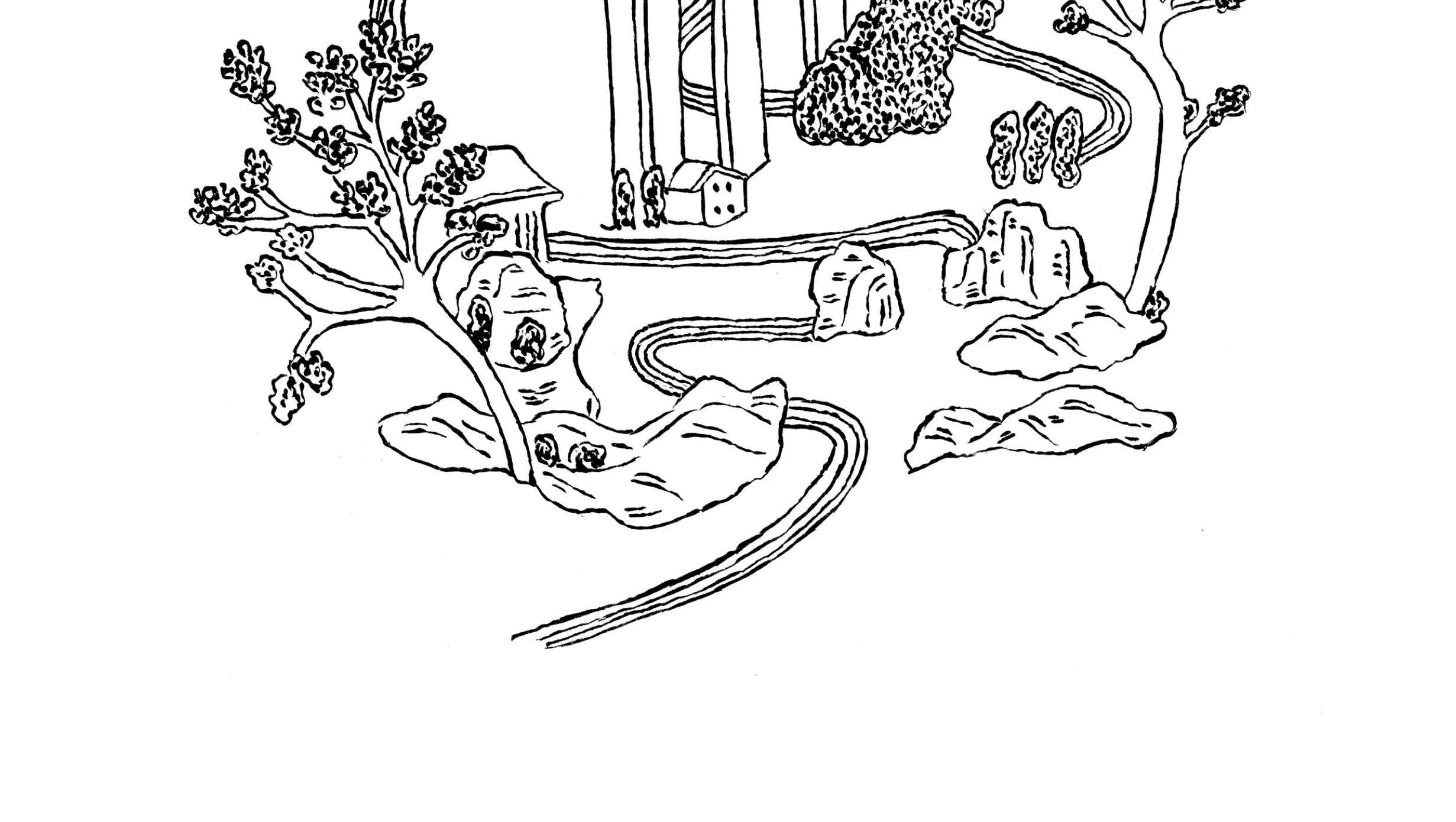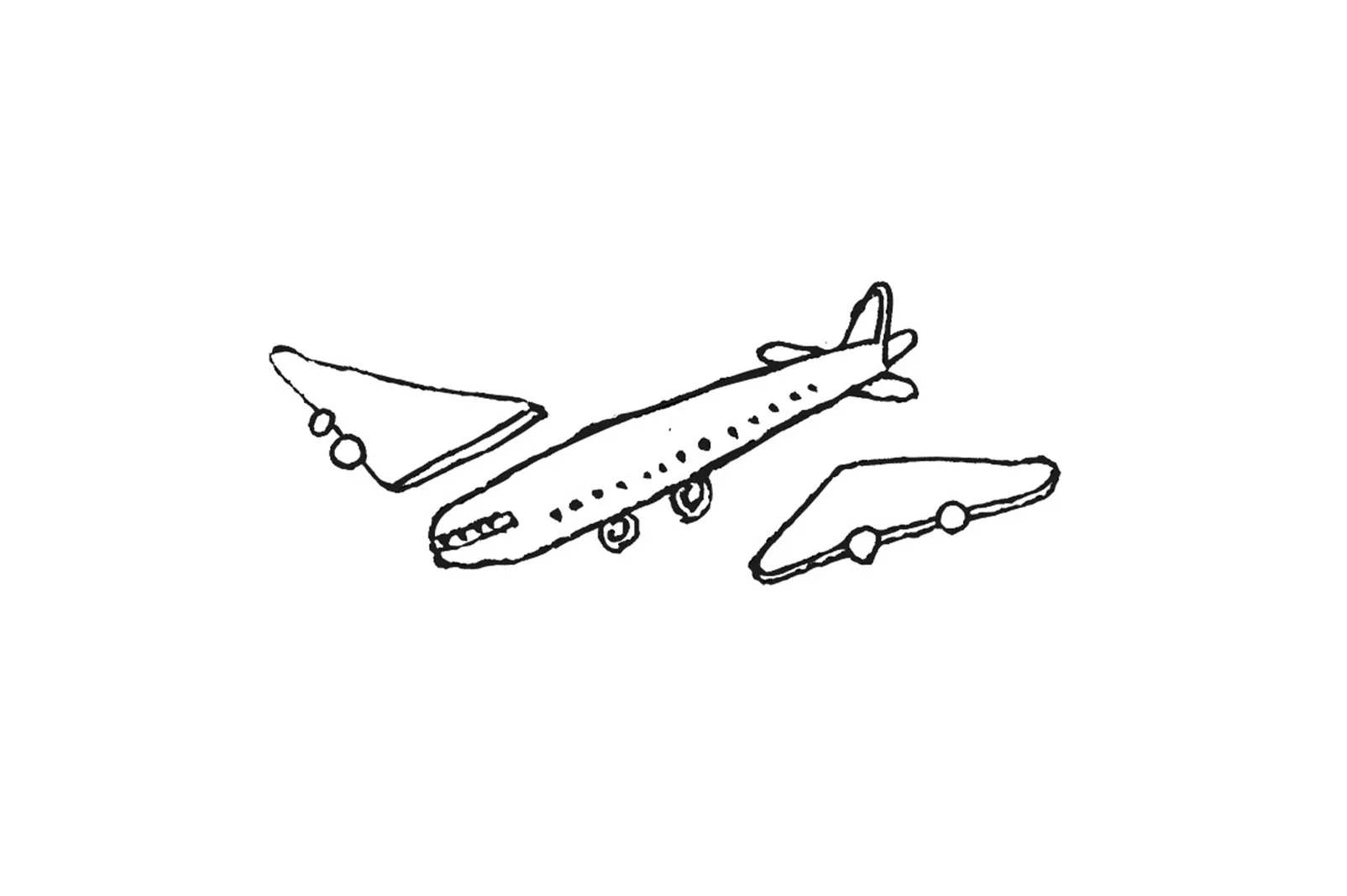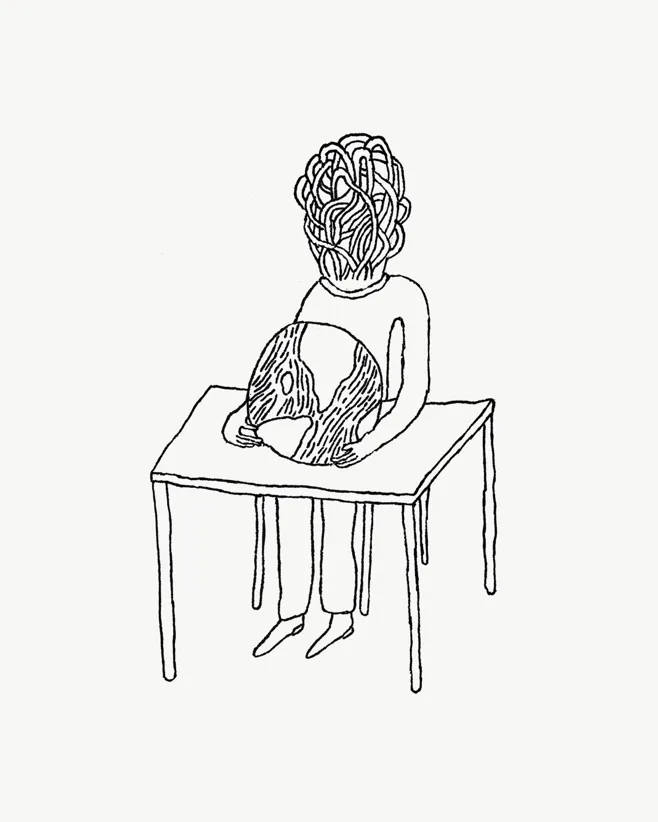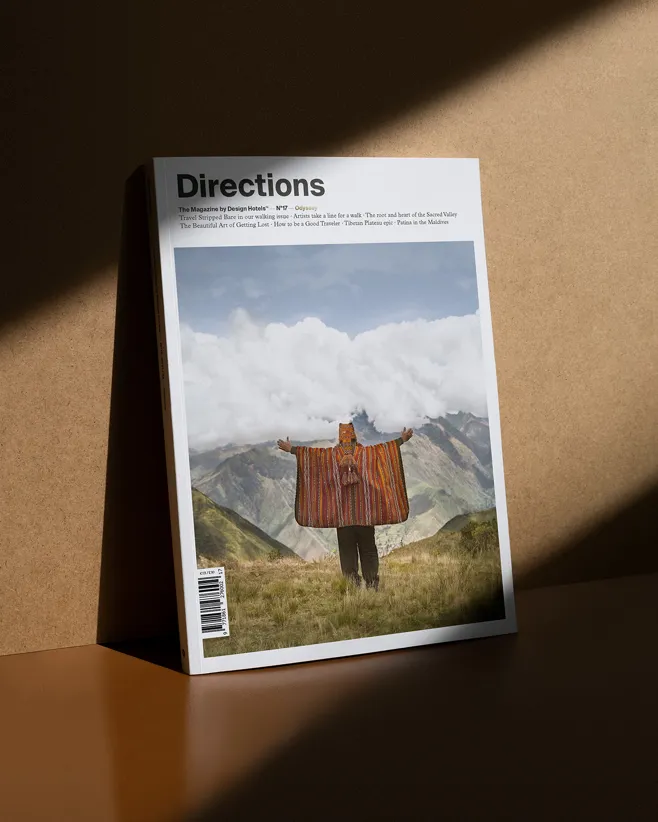
Words Ben CrairIllustrations Paula TroxlerDate 17 June 2020
The first trash can I used after two days of travel sat beneath a two-story viewing platform at the end of a high Alpine trail. I had arrived on an electric bike and climbed the platform, which pointed like an arrow over the Rhine Gorge. I gripped my phone as I faced the wind and took a photo of the mountains, which interlocked from alternating banks of the undulating river. Then I climbed back down the platform, ate an egg-salad sandwich, and chucked the wrapper in the trash.


I had been trying to travel while producing as little waste as possible. While I stopped short of a full zero-waste regimen—whose proscriptions included things like a “portable bidet” in lieu of toilet paper—I had resolved to avoid all single-use plastics, eat as locally as possible, and travel only in low-emissions vehicles like buses and trains. I started with a night train from my home in Berlin to Basel, a bumpy ride on a hard middle bunk that left me desperate for coffee in the train station the next morning. Transit hubs are temples of disposability, designed to indulge cranky travelers with fast food and cheap replacements for whatever they forgot to pack. I searched desperately for a coffee in a non-disposable cup until I found a sit-in café with porcelain mugs. Then I climbed aboard my transfer to Chur and fell asleep with my head against the window.
I woke as the train pulled into the station. Chur is a charming little city nestled between mountains, but I was there only to catch a bus and drive another hour to the ski town of Laax. The 15-hour overland journey reminded me of how spoiled I had grown from cheap flights on budget airlines. From Berlin, I could visit almost any European capital or Mediterranean beach within three hours. Worldliness didn’t do the world any favors, though. Airplanes emit way more carbon dioxide per passenger than any other form of travel. Every round-trip trans-Atlantic flight emits enough carbon dioxide to melt almost three square meters of Arctic sea ice.
I had chosen the mountains as my destination because they are one of Europe’s regions most affected by global warming. Due to their high altitude, the Alps have seen temperatures rise almost twice as quickly as the global average. The glaciers lose one percent of their mass every year and could disappear completely by the end of the century. The Alpine tourism industry is trying to adapt to these changes—but it isn’t blameless either. Ski resorts require huge amounts of energy to heat guestrooms in winter and make snow on the slopes. The old way of doing business is no longer sustainable, and in Laax, Switzerland, a ski resort called Rocksresort is trying to forge a new way forward.
I could see that Rocksresort was doing something different as soon as I arrived. Unlike the chalet-style hotels you see all over Switzerland, Rocksresort is a cluster of gray-quartzite cube buildings—an architectural style that feels both Neolithic and futuristic. Each of the buildings contains a variety of restaurants and shops, as well as guest suites on the upper floors. They all draw their electricity from nearby hydropower and their heat from biomass. The chairlifts run on solar panels. When capacity exceeds demand, Rocksresort uses the excess electricity to pump water up the mountain—so it can flow down again later and provide the hydropower needed to make snow.
“I can’t change the world, but I can change the ecosystem up here,” says Reto Gurtner, whose company Weisse Arena Gruppe opened Rocksresort in 2009. He became swept up in the environmental movement in California in the 1970s at the same time he was discovering extreme sports. When Gurtner came back to Switzerland to take over his father’s chairlift-operating company, he saw an opportunity to combine these newfound interests. He grew the company to include hotels, restaurants, and sports equipment. Laax became a hub of the freestyle-skiing scene, and Rocksresort a model for how a ski resort could operate in the Alps without destroying them.
There was no snow on the mountain when I visited in mid-October, so I borrowed an electric bike on my second day at Rocksresort instead. I had ordered the egg salad at one of the cafés and watched dejectedly as the cashier put it in a paper bag with a plastic window. Rocksresort had launched a campaign to reduce its waste by half, but of course, customers were ultimately responsible for the waste that they produced. I had made it through three train stations without creating any garbage, but now I knew I would have to deal with the bag later. I put it in my backpack and hit the trail.

I biked an hour to the viewing platform over the Rhine Gorge, where I scoffed my sandwich and guiltily disposed of my wrapper in the most beautifully located trash can I had ever seen. I checked my watch and discovered it wasn’t even noon—I could have just as easily biked back and eaten at the café, no packaging required.
Disappointed in myself, I biked to Caumasee, a lake with exquisitely turquoise waters. It has become a popular backdrop for Instagram photos, but on an off-season autumn morning, I had it almost entirely to myself. Trees dropped red leaves on the water, like an image from a Japanese woodblock print. I forgot for a moment all of the terrible ways I could make a mark on a place, through plastic waste or carbon emissions, and enjoyed the sensation of an unforgettable scene making its mark on me.

What does it take to travel sustainably? In a prescient move to the future of travel, Ben Crair sets off by rail, bus, and electric bike on a journey through the Swiss and Italian Alps with one clear goal in mind: produce as little waste as possible.

The preceding article is excerpted from the 2020 edition of Directions, an annual magazine by Design Hotels that looks at movements underway in art, design, food, wellness and fashion, and how they affect the way we live and travel. This year’s issue explores the motivations, values, and desires of the Promadic Traveler of tomorrow—one who does not ask where to travel, but why.
